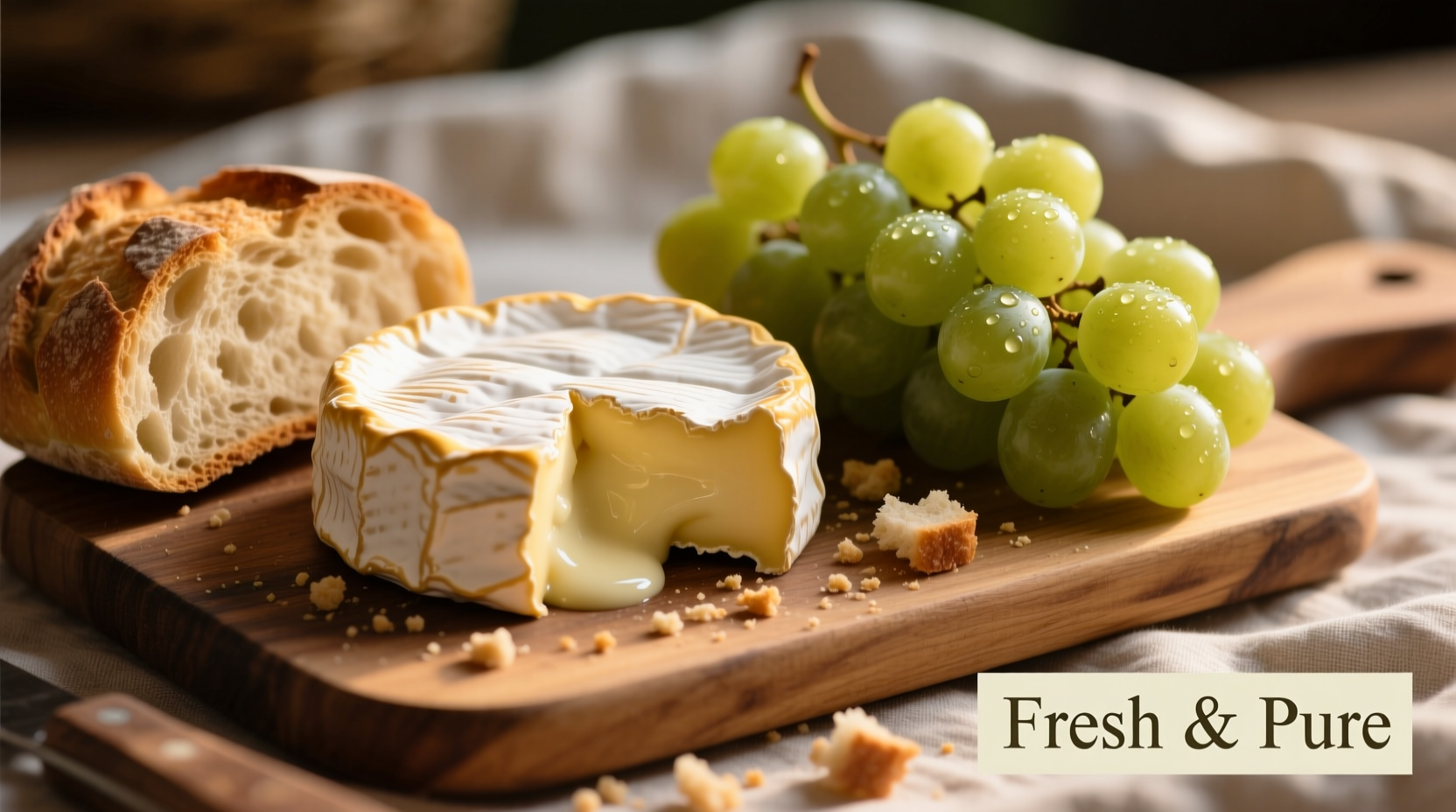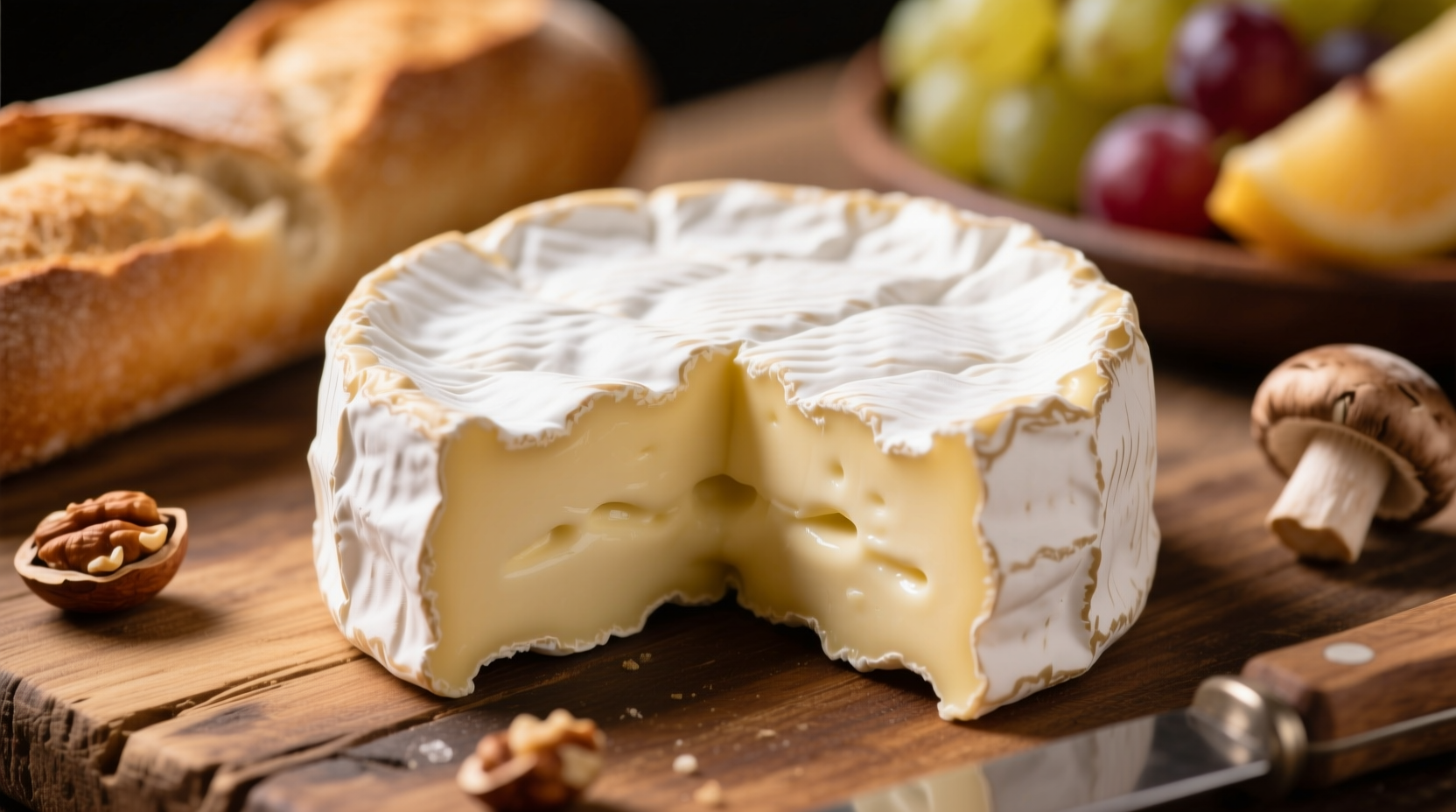Ever wondered what makes brie the "queen of cheeses" beloved by gourmands worldwide? Understanding brie's distinctive flavor profile transforms how you experience this French delicacy. Whether you're selecting your first wheel at the grocery store or preparing a sophisticated cheese board, knowing exactly what to expect from brie's taste will elevate your culinary adventures.
Decoding Brie's Sensory Experience
When you take your first bite of quality brie, you'll immediately notice its luxurious texture—smooth, spreadable, and almost custard-like when perfectly ripe. The flavor unfolds in layers: initial buttery richness gives way to subtle earthy notes, followed by a clean finish with just a hint of tang. Unlike stronger cheeses, brie never overwhelms; instead, it offers a delicate balance that complements rather than dominates.
How Ripeness Transforms Brie's Flavor Profile
Brie undergoes remarkable flavor evolution as it matures. Understanding this timeline helps you select brie that matches your taste preferences:
| Ripeness Stage | Texture | Flavor Characteristics | Recommended Serving |
|---|---|---|---|
| Young (Underripe) | Firm, chalky center | Mild, milky, slightly acidic | Needs 3-5 days of ripening |
| Perfectly Ripe | Creamy throughout, yielding to gentle pressure | Buttery, mushroom, nutty with balanced tang | Immediate enjoyment |
| Overripe | Very soft, liquid center | Strong ammonia notes, intense earthiness | Only for experienced palates |
The transformation occurs because Penicillium camemberti mold breaks down fats and proteins during aging, creating increasingly complex flavor compounds. According to research published in the Journal of Dairy Science, the optimal ripeness window lasts just 3-5 days after the cheese reaches its peak maturity.
Brie vs. Other Soft Cheeses: Understanding the Differences
While often compared to Camembert, brie has distinctive characteristics that set it apart. This comparison helps clarify what makes brie unique:
| Cheese Type | Flavor Profile | Texture | Origin | Milk Fat Content |
|---|---|---|---|---|
| Brie de Meaux (AOC) | Buttery, nutty, subtle mushroom | Ultra-creamy, smooth | France (Île-de-France) | ≥60% fat in dry matter |
| Camembert de Normandie | Stronger mushroom, earthier | Denser, more uniform | France (Normandy) | ≥45% fat in dry matter |
| Double/Triple Crème Brie | Richer, more buttery, milder | Extremely creamy | Various | 75-85% fat in dry matter |
The American Cheese Society confirms that authentic French Brie de Meaux contains at least 60% fat in dry matter, contributing significantly to its signature buttery mouthfeel. This higher fat content creates a smoother texture and more delicate flavor compared to many domestic versions.
Contextual Factors That Influence Brie's Taste
Several conditions dramatically affect how brie tastes, explaining why your experience might vary:
- Serving temperature: Brie served straight from the refrigerator (40°F/4°C) tastes chalky and one-dimensional. The ideal serving temperature is 60-65°F (15-18°C), allowing flavors to express fully
- Accompaniments: As documented by the French National Institute of Origin and Quality (INAO), traditional pairings with baguette and Champagne enhance brie's natural sweetness while cutting through its richness
- Storage conditions: Exposure to plastic wrap can create unwanted ammonia notes, while improper humidity affects texture development
- Seasonal variations: Artisan producers note that spring and summer bries often feature grassier notes from fresh pasture grazing

Practical Tasting Guide: How to Fully Appreciate Brie
Follow this professional tasting sequence to experience brie's complete flavor profile:
- Observe: Check for even color (ivory to pale yellow) and avoid any yellow or brown spots
- Smell: Fresh brie should have a pleasant mushroom aroma—strong ammonia indicates overripeness
- Touch: Gently press near the edge; it should yield slightly but not feel liquid
- Taste: Take a small bite including the rind, which contributes earthy complexity
- Consider: Note how flavors evolve from initial buttery notes to the clean, slightly tangy finish
Perfect Pairings to Enhance Brie's Natural Flavor
Understanding what complements brie's delicate profile helps create memorable culinary experiences:
- Wines: A crisp Champagne or unoaked Chardonnay cuts through the richness while enhancing subtle nutty notes
- Breads: Rustic baguette provides ideal textural contrast to brie's creaminess
- Fruits: Sliced pears, apples, or grapes offer refreshing sweetness that balances the cheese
- Nuts: Toasted walnuts or almonds echo brie's natural nuttiness
- Condiments: A small drizzle of honey or fig jam creates a delightful sweet-savory contrast
The University of California's Dairy Research Facility confirms that pairing brie with acidic elements like Champagne helps break down fat molecules, releasing additional flavor compounds you wouldn't experience otherwise.
Common Misconceptions About Brie's Flavor
Several myths persist about brie's taste that deserve clarification:
- "Brie should taste strongly of ammonia": While a faint mushroomy aroma is normal, pronounced ammonia indicates overripeness or improper storage
- "The rind is inedible": The white mold rind contributes significantly to brie's complex flavor profile and should be consumed
- "All brie tastes the same": Artisan varieties show remarkable terroir expression, with farmstead versions reflecting local pastures
- "Brie is just like cream cheese": Unlike processed cream cheese, authentic brie develops complex flavors through natural ripening
Bringing It All Together: Your Brie Tasting Journey
Now that you understand brie's distinctive flavor profile, you can confidently select, serve, and enjoy this classic French cheese. Remember that properly ripened brie offers a harmonious balance of buttery richness, subtle earthiness, and clean finish that has captivated cheese lovers for centuries. Whether you're hosting an elegant gathering or simply treating yourself to a quiet cheese moment, your newfound understanding will transform how you experience this beloved cheese.
Frequently Asked Questions
Does brie taste like camembert?
While similar, brie has a milder, creamier profile with more pronounced buttery notes compared to camembert's stronger earthy, mushroom flavor. Brie typically contains higher fat content (60% vs 45% in dry matter), creating a smoother texture and more delicate taste experience.
Why does some brie taste like ammonia?
A strong ammonia smell indicates overripeness or improper storage. As brie ages, protein breakdown produces ammonia compounds. While a faint mushroomy aroma is normal in ripe brie, pronounced ammonia suggests the cheese has passed its optimal eating window. Properly stored brie should have a pleasant, earthy scent without harsh chemical notes.
How does the rind affect brie's taste?
The edible white rind significantly enhances brie's flavor profile, adding subtle mushroom and earthy notes that complement the creamy interior. Made from Penicillium camemberti mold, the rind develops during aging and contributes to the cheese's complexity. Chefs recommend eating the rind along with the paste for the complete flavor experience.
Does the taste of brie change with age?
Yes, brie's flavor evolves dramatically as it ripens. Young brie tastes mild and slightly acidic with a firm texture. At peak ripeness (typically 4-6 weeks after production), it develops its characteristic buttery, nutty flavor with mushroom undertones. Overripe brie becomes very soft with stronger ammonia notes and more intense earthiness. The optimal flavor window lasts just 3-5 days at perfect ripeness.
What foods enhance brie's natural flavor?
Brie pairs beautifully with crusty baguette, fresh pears, and Champagne, which enhance its buttery notes while cutting through richness. Toasted walnuts echo its natural nuttiness, while a drizzle of honey creates delightful sweet-savory contrast. The French National Institute of Origin and Quality recommends serving brie at 60-65°F (15-18°C) with acidic elements that help release additional flavor compounds.











 浙公网安备
33010002000092号
浙公网安备
33010002000092号 浙B2-20120091-4
浙B2-20120091-4